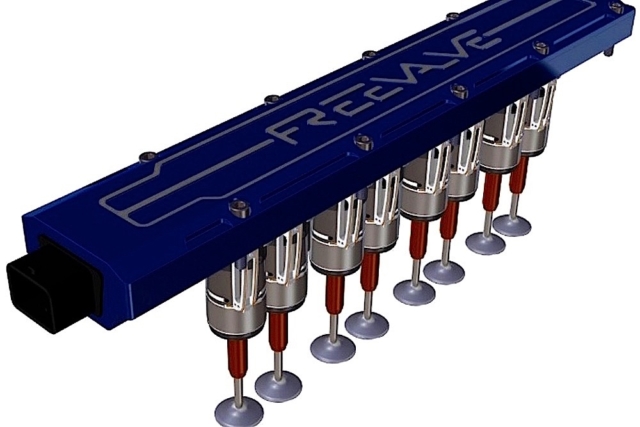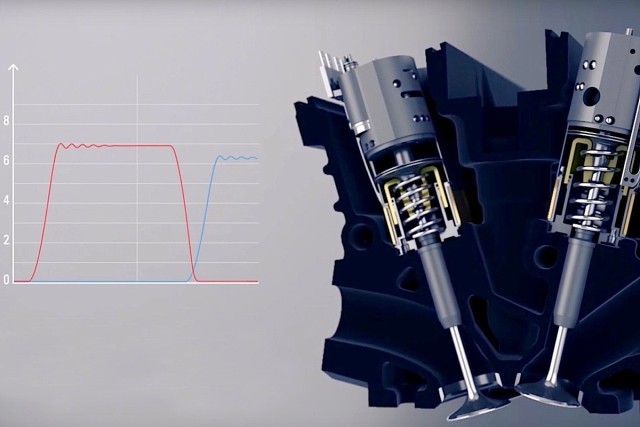If the internal combustion engine were invented today, it’s doubtful it would even have a camshaft. There is enough technology to build a camless engine, and one of the most active efforts in this design approach comes from Freevalve, a subsidiary of Swedish hypercar manufacturer Koenigsegg. The company just released a video that demonstrates the valve action using a electronically controlled pnueumatic valve actuators.

In the Koenigsegg engine, each valve is operated by an electronically controlled pneumatic actuator.
The idea of a camless engine has been around for years with some success on a demonstration level, and numerous companies are currently pursuing production versions. While the Freevalve approach involves pneumatics, others are working with electrohydraulic and electromagnetic devices that control the valve timing. There’s even been a camless diesel engine that’s raced up Pike’s Peak, but the technology just hasn’t been perfected enough or the costs haven’t come down enough to make it worthwhile for a production engine.
But think of all the benefits a camless engine can offer; that is, basically unlimited flexibility in controlling valve lift, duration and overlap. The rate of valve lift has always been limited by lobe and lifter design in a traditional cam engine. Conventional wisdom suggests that flow losses across the valve can be reduced with a faster opening and closing rate. Obviously, other factors come into play, such as piston velocity and position. But the end result of having individual control over each valve is analogous to selecting from dozens of camshaft profiles at any given rpm or engine load in a conventional engine.
Precision and durability are the likely hurdles facing engineers. Diesel engines have shown the most promise due to their low-rpm requirements. Small engines with lightweight valves are also ideal candidates. Sensors have to be improved to maximize efficiency, and since electronics play such a critical role in the operation, the vehicle may have to support 42- or 48-volt battery systems. Finally, a car logging 90,000 miles will see an individual valve actuate 120 million or more cycles, and diesel engines are well over a billion due to their expected lifespan.
So, there are challenges in implementing camless technology into a production vehicle, but the rewards could be well worth the effort — especially if the progress leads to the holy grail of internal combustion: HCCI.
For more on the Koenigsegg vision, see the video below.






















